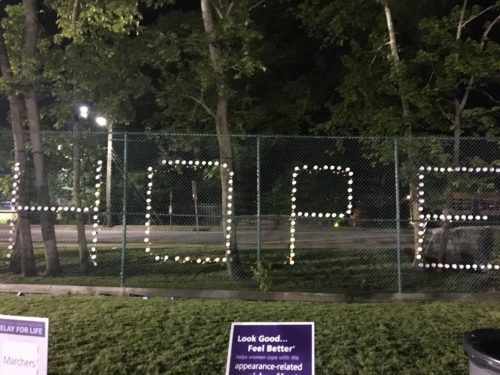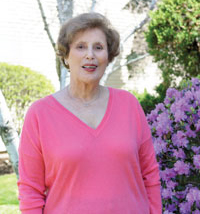 A close and unrushed ‘listen’ to George Latimer’s most recent update this week on coronavirus in Westchester offered several reasons to stay at least cautiously optimistic that infection from coronavirus is “diminishing” across the county, including in Chappaqua in the two days preceding the July 6 briefing. Chappaqua experienced a recent spike–27 cases, including 21 in Chappaqua, were tracked to the New Castle hamlet in the last two weeks–but the infection may be leveling off thanks to cautionary measures that have included a mandatory quarantine of persons impacted.
A close and unrushed ‘listen’ to George Latimer’s most recent update this week on coronavirus in Westchester offered several reasons to stay at least cautiously optimistic that infection from coronavirus is “diminishing” across the county, including in Chappaqua in the two days preceding the July 6 briefing. Chappaqua experienced a recent spike–27 cases, including 21 in Chappaqua, were tracked to the New Castle hamlet in the last two weeks–but the infection may be leveling off thanks to cautionary measures that have included a mandatory quarantine of persons impacted.
While conveying a message of hope and positivity, Latimer also issued clear warnings for continued vigilance and compliance with recommendations (social distancing/mask wear/hand washing) against the coronavirus to make sure it stays that way.
The continuous decline for two and a half months in active cases has likely been due to the act of compliance with masks in public, stressed Latimer, Westchester’s County Executive who has been providing near daily updates streamed live on Facebook and shared later in a You Tube link. The full press briefing may be viewed here https://youtu.be/ys1l09q1Uks
Coronavirus battling measures included asking business and store owners to wear masks, “influencing society. Now, it has become much more of the norm than it ever was,” he said.
On July 6, Latimer reported 527 active cases of CoronaVirus within the county.
Between March 1 (a period commonly designated as the ‘beginning of the pandemic’) and July 6, 35,084 people tested positive for Covid-19. “However, percentage-wise, there has been a little over 1% of positives as of the night on July 5. In one day, only 41 people were found to have the virus after testing almost 4000 people– indicating the spread is diminishing.”
Compared to March or April, he explained, “arguably the height of the pandemic across America, there was as much as 30% of all people tested coming in positive. But as more testing is being conducted, the percentage of those who have the coronavirus has been substantially lowering”.
More Positive Findings for Westchester
- Fewer hospitalizations. In addition: as of July 5 too, 29% of Westchester county residents have been tested for Covid-19, “which again, is a huge number and much higher than in other jurisdictions.” There have been fewer hospitalizations too, he shared, with 61 people having been hospitalized as of Saturday, dropping from the 70 individuals reported a week ago.
- Zero fatalities the night of July 5. “To top off the relatively good news, there were no fatalities on the night of July 5 and only three deaths in the recent week, ameliorating from the 30-50 deaths per day a couple of months ago in America.”
Staying cautiously optimistic, Latimer conveyed that “the past week has seen a rise and fall in cases, from the recent Chappaqua outbreak, dating back to over two weeks ago; the rise has increased to 27 positive cases that tie back to the set of activities… that include a graduation drive in ceremony and a ‘field night’ event following the graduation, both in rather large gatherings and minimal masks and social distancing.”
“Of the 27 positive cases, 21 tracked to Chappaqua, three of them tracked to Mount Kisco, two track to Bedford, and one track to Pleasantville. “As of now, there have been no new cases in the last two days that are trackable to the Chappaqua spike. If so, it is thought to be leveling off,” Latimer said. “Keep in mind, if they caught COVID that night, they would have gone through two weeks without having shown symptoms… Of course, it’s possible that if somebody caught it, and then was further infected later, there are still some ways that the Chappaqua spread may linger on longer.”
“I think we’ve had a good response at this particular outbreak,” continued the executive. “Nothing is perfect, but we’ve gotten substantial compliance. 80-85% of the people have responded… We seem to be in a pretty good place for having understood and dealt with it.”
As for the opening of Phase 4 this week (on July 7) in response to the Covid-19 pandemic, major changes are set “for allowable activity.
For outdoor and indoor arts entertainment, low-risk areas have been set to a limit of up to 50 people. As Latimer would elaborate, this would include “the traditional summer band concert in Scarsdale at Chase Park or the theatrical and concert performances that go on in the gazebo in Armonk.” Anything along these lines, while fitting the specific guidelines, will do.
As the last revealed phase of reopening, the governor still has not reopened amusement parks, health clubs, and gyms. “These will not be things that are going to be lifted in future phases; instead, there would be executive orders by the governor on that specific action or function that may happen at any point in time.”
Latimer’s briefings will continue once a week every Monday at 2 pm EST, as opposed to the daily updates Monday through Thursday, he said. Despite a recent uptick in numbers, the steady decrease throughout would mean “we would not need to do this on a regular basis,” he stated from the County Executive’s White Plains conference room.
Editor’s Note: Brian Zhang, a rising junior at Byram Hills High School, assisted in preparing this update, as a first assignment as a summer intern for the Inside Press.
 On May 20th, the field in front of Bell Middle School was transformed. Tents and tables sprung up across the property as Greeley students prepared to spend the night at one of the most anticipated fundraising events of the year: the 10th Annual Relay for Life of Chappaqua. All night long, these participants would walk in support of cancer patients, raising money for research and fostering hope for a world without cancer.
On May 20th, the field in front of Bell Middle School was transformed. Tents and tables sprung up across the property as Greeley students prepared to spend the night at one of the most anticipated fundraising events of the year: the 10th Annual Relay for Life of Chappaqua. All night long, these participants would walk in support of cancer patients, raising money for research and fostering hope for a world without cancer.

